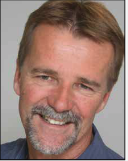Building bridges, chasing dreams
By Paul Hogendoorn
The Sydney Harbour Bridge was completed in 1932. It was designed and built by the British firm Dorman Long and Co Ltd., taking 8 years to build, and using more than 6 million rivets. It is the sixth longest spanning-arch bridge in the world and the tallest steel arch bridge, measuring 440 feet from top to water level. (I know first hand, as my granddaughter and I walked over the top of it, during our recent visit to Australia.) Until recently, it was also the world’s widest long-span bridge, at nearly 165 feet – which is an amazing fact, since it was originally designed to accommodate 2 lanes of traffic, or 50,000 cars per week. Today it accommodates 1 million cars a week, has 8 lanes of traffic, plus 2 rail lines, and a generous foot path. It is definitely a testimony to the forward thinking of the people that brought it into being.
It was built at a cost of 10 billion pounds, borrowed from Great Britain, and paid back fully in 1986. The life expectancy was originally 80 years, but now it is estimated to last 300 years. The Australians are justifiably proud of their bridge.
An equally fascinating story is the one of Paul Cave, the entrepreneur that came up with the idea that tours across the structure would be good for tourism for the area, not to mention a good business idea. Whereas it took 8 years to build the bridge, from start to finish, it took 9 years to get his “bridge climb” idea from dream to reality. As you might imagine, there were a lot of discussions with state and local government bodies, community groups and many experts on safety, logistics, media, heritage and conservation issues. As the story was informally told (on the tour I took with my granddaughter), when Cave first approached the authorities with the idea, they assigned someone the task of assessing the idea’s merits and possibilities. The conclusion of that study was a list of 64 reasons why it couldn’t be done. Undaunted, he thought it would take two years, but it took nine, and it proved to be more than he could do himself. When he got near the end, he had to find 2 other local business people that believed in that vision and were willing to invest their money to see it come to fruition.
That got me thinking about how that is not too different than what many entrepreneurs experience; for every one person that has a differentiated idea they are willing to invest their time in, there seems to be 64 reasons (or 64 people that are eager to tell you) why it can’t be done. It also made me realize that getting a good idea off the ground takes more than time, energy and resources, it takes a few early believers to put their shoulder to the wagon as well. (And usually a tremendously supportive spouse). When I look back at the two ventures (adventures, really) I have been involved with, including the current one, several names and faces come quickly to mind. Sometimes they were investors, sometimes early adopting customers, and sometimes coworkers that shouldered the load day to day, or challenge to challenge. It is nearly impossible to do alone.
The first big test of an idea (or an entrepreneur) is a test of commitment – are you willing to swim against the stream long enough to give your idea a chance? And, are there any others that believe too? There will be plenty of detractors, but all you need is a couple of believers that are willing to make a commitment too. Paul Cave obviously did, investing his time and his own money until he was able to attract others to help him see the idea come to fruition. And today, nearly 4 million people have taken the tour, each one forming indelible memories of the bridge, the courage of the workers that built it, and the foresight and engineering mastery of the people that designed it. And who knows how many of those people will be inspired by Paul Cave’s story of persisting, despite all the opposition he faced. As I stood at the top of it, I know I was. More importantly, my granddaughter was too.
To all those that have helped me pursue my dreams (or helped build bridges along the way), thank you.
Paul Hogendoorn is president and cofounder of FreePoint Technologies. He can be reached at [email protected] or www.getfreepoint.com






























































